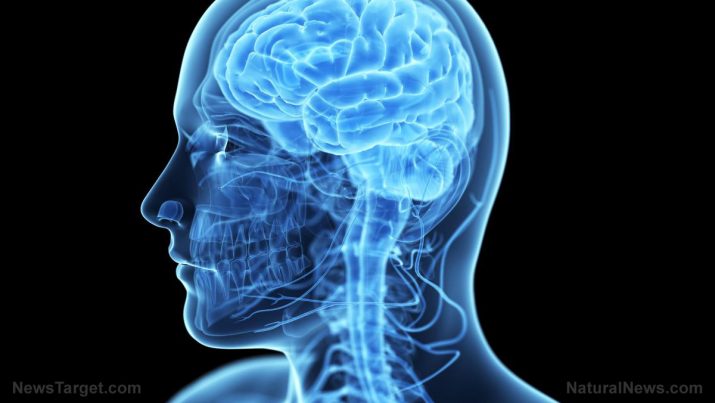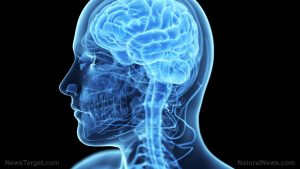
Dural Arteriovenous Fistula – causes, side effects and treatments at NaturalPedia.com
Thursday, March 15, 2018 by Ralph Flores
http://www.naturalpedia.com/dural-arteriovenous-fistula-causes-side-effects-and-treatments-at-naturalpedia-com.html

Dural arteriovenous fistulas, also called arteriovenous fistula or DAVF, are abnormal connections that exist between an artery and a vein in the tissues around the brain or spinal cord called dura matter. In particular, DAVFs exist when an artery, which carries oxygen-rich blood to the brain, is directly connected to a vein.
One of the more serious problems linked with DAVF is the increased pressure in the venous system around the brain and spinal cord, a result of the direct transfer of the blood from the arteries to the veins.

Known risk factors and symptoms of dural arteriovenous fistula
Genetic factors can be a factor in the development of DAVF. In some cases, people are born with the condition, as well as other forms of arteriovenous fistula – such as those found in the lungs. However, having an injury in the affected area increases the chance of developing the condition. Certain surgical procedures and medical conditions, such as late-stage kidney failure, can also increase the likelihood of DAVF.
Signs and symptoms of DAVF vary depending on the case; however, common symptoms include the following:
- Headaches — These are one of the most common symptoms of DAVF.
- Tinnitus — Ringing or humming in the ears is indicative of DAVF, especially if it the condition is near the area. Reported symptoms include a pulsating noise, caused by blood flow through the fistula.
- Stroke-like symptoms — DAVF can cause seizures and symptoms that closely mimic a stroke. In severe cases, the blood vessels may rupture, causing internal bleeding that may lead to disability or even death.
- Problems with the vision — If a DAVF is located near the eyes, this can cause impaired vision, redness of the eye and swelling, and sinus congestion.
Body systems affected by dural arteriovenous fistula
While DAVF primarily affects the blood vessels in the brain; complications may be far-reaching and may affect the whole cardiovascular system.
Food items or nutrients that may prevent or relieve dural arteriovenous fistula
Keeping blood vessels strong is one way to support it against DAVF and other conditions that may adversely impact it. Here are some suggested food items to strengthen blood vessels.
- Nitric oxide makes blood flow easier and helps lower blood pressure. These can be naturally found in the amino acids arginine and citrulline, which are present in beets and green leafy vegetables.
- Antioxidants improve blood vessel function and reduce stiffness. Grapes, apples and other berries are excellent sources of antioxidants. In addition, vitamin E, which is found in nuts and avocado, protects cells from damage caused by free radicals.
- Folate, vitamin B6, and vitamin B12 help blood vessels regulate homocysteine, an amino acid that can cause damage when excessive amounts are present. Find these in green leafy vegetables, bananas, potatoes, and some meat products.
Treatment and management options for dural arteriovenous fistula
Treating DAVF depends on the blood vessels that are affected by the condition.
- Embolization is a “minimally invasive treatment” to address DAVF. This involves passing a small catheter through a blood vessel to close off the connection.
- Radiosurgery targets the area where the DAVF is located and blasts it with radiation.
- Neurosurgical disconnection is a process to remove the fistula by excising the affected dura and the draining vein.
Where to learn more
- 11 Most Effective Benefits of Hyperbaric Chamber
- Slash your risk of stroke by 42 percent with vitamin C
- Health.news
- Medicine.news
- NaturalCures.news
Summary
Dural arteriovenous fistulas exist when an artery is abnormally connected to a vein in the region surrounding the brain. One of the more serious problems linked with DAVF is the increased pressure in the venous system around the brain and spinal cord, a result of the direct transfer of the blood from the arteries to the veins. In some cases, people are born with the condition, as well as other forms of arteriovenous fistula – such as those found in the lungs. However, having an injury in the affected area and certain surgical procedures and medical conditions can also increase the likelihood of DAVF. While the condition primarily affects the blood vessels in the brain; complications may be far-reaching and may affect the whole cardiovascular system.
Sources include:
Tagged Under: Tags: dural arteriovenous fistula





